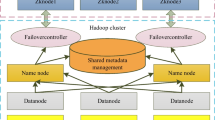Abstract
Optical processing technology can improve the accuracy and efficiency of image processing. Visual packaging art design simulation is to quickly generate realistic packaging effects in the early stage of packaging design, so as to make better design decisions. Traditional simulation methods often require a lot of time and human resources, and the results lack realism and detail. Machine vision technology based on optical processing can make full use of image processing algorithms and computer vision technology to achieve efficient and accurate packaging design simulation. In this paper, a machine vision technology framework based on image optical processing is proposed. In the image acquisition stage, high-resolution cameras are used to acquire real packaging images, and in the optical processing stage, algorithms are used to enhance, reduce noise and correct images to improve image quality and clarity. In the image analysis stage, machine learning algorithms are used to extract features and detect and identify packaging elements, providing data support for subsequent simulation rendering. The results show that the machine vision technology based on image optical processing can generate high quality and realistic simulation effect of packaging design. Compared with traditional methods, this technique has achieved significant improvements in terms of time cost and design quality.






Similar content being viewed by others
Data availability
The data will be available upon request.
References
Alrufaiaat, S.A.K., Althahab, A.Q.J.: A new DOA estimation approach for QPSK alamouti STBC using ICA technique-based PSO algorithm. Int. J. Commun. Syst. 32(2), 1–12 (2019)
Andrei, L.: BER analysis of STBC codes for MIMO Rayleigh flat fading channels. Telfor J. 4(2), 78–82 (2012)
Bhaskar, V., Kandpal, D.: Generalized selection combining scheme for orthogonal space—time block codes with M-QAM and M-PAM modulation schemes. Wirel. Pers. Commun. 94(3), 1619–1641 (2017)
Biguesh, M., Gershman, A.: Experimental proof of a load training-based MIMO channel estimation: a study of estimator tradeoffs and optimal training signals. IEEE Trans. Signal. Process. 54(3), 884–893 (2006)
Chen, L., Zhang, L., Liu, T., Li, Q.: Blind signal separation algorithm based on bacterial foraging optimization. In: International Conference on Applied Informatics and Communication. Springer, Berlin, pp 359–366 (2011)
Cichocki, A., Amari, S.I.: Adaptive Blind Signal and Image Processing: Learning Algorithms and Applications. Wiley (2002)
Clerc, M., Kennedy, J.: The particle swarm—explosion, stability, and convergence in a multidimensional complex space. IEEE Trans. Evol. Comput. 6(1), 58–73 (2002)
Djordjevic, I.B.: Advanced Optical and Wireless Communications Systems. Springer, Heidelberg (2017)
Gao, Y., **e, S.: A blind source separation algorithm using particle swarm optimization. In: Proceedings of the IEEE 6th circuits and systems symposium on emerging technologies: frontiers of mobile and wireless communication, vol 1, issue 3, pp 297–300 (2004)
Huang, C., et al.: The performance analysis of multi-hop MIMO free space optical communications with space-time block codes over exponentiated weibull fading channels. Opt. Commun. 442, 95–100 (2019)
Hyva¨rinen, A., Oja, E.: Independent component analysis: algorithms and applications. Neural Netw. 13(4–5), 411–430 (2000)
Hyvarinen, A.: Fast and robust fixed-point algorithms for Independent component analysis. IEEE Trans. Neural Netw. 10(3), 626–634 (1999)
Li, Z.C., Huang, X.L.: A novel blind source separation approach based on invasive weed optimization. In: DEStech transactions on computer science and engineering (cnai), pp 43–48 (2018)
Li, X., Luo, T., Yue, G., Yin, C.: A squaring method to simplify the decoding of orthogonal space-time block codes. IEEE Trans. Commun. 49(10), 1700–1703 (2001)
Liu, W., Mandic, D.P.: A normalised kurtosis-based algorithm for blind source extraction from noisy measurements. Signal. Process. 86(7), 1580–1585 (2006)
Luo, Z., Li, C., Zhu, L.: A comprehensive survey on blind source separation for wireless adaptive processing: Principles, perspectives, challenges and new research directions. IEEE Access. 6, 66685–66708 (2018)
Funding
The authors have not disclosed any funding.
Author information
Authors and Affiliations
Contributions
YG has done the first version, HY and LF has done the simulations. All authors have contributed to the paper’s analysis, discussion, writing, and revision.
Corresponding author
Ethics declarations
Conflict of interest
The authors declare that they have no competing interests.
Ethical approval
Not applicable.
Additional information
Publisher’s Note
Springer Nature remains neutral with regard to jurisdictional claims in published maps and institutional affiliations.
Rights and permissions
Springer Nature or its licensor (e.g. a society or other partner) holds exclusive rights to this article under a publishing agreement with the author(s) or other rightsholder(s); author self-archiving of the accepted manuscript version of this article is solely governed by the terms of such publishing agreement and applicable law.
About this article
Cite this article
Guangpeng, Y., Yin, H. & Fengze, L. Computer vision technology based on image optical processing in visual packaging art design simulation. Opt Quant Electron 56, 529 (2024). https://doi.org/10.1007/s11082-023-06142-4
Received:
Accepted:
Published:
DOI: https://doi.org/10.1007/s11082-023-06142-4




